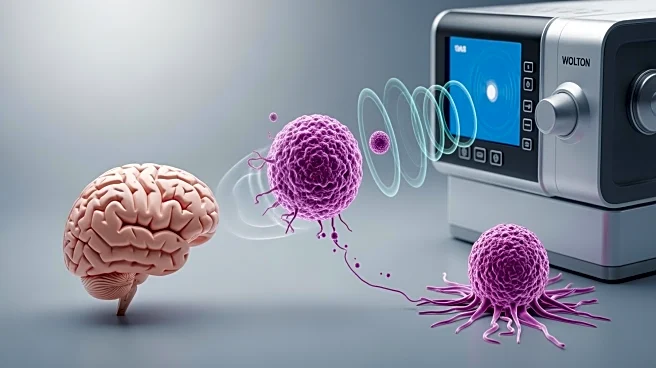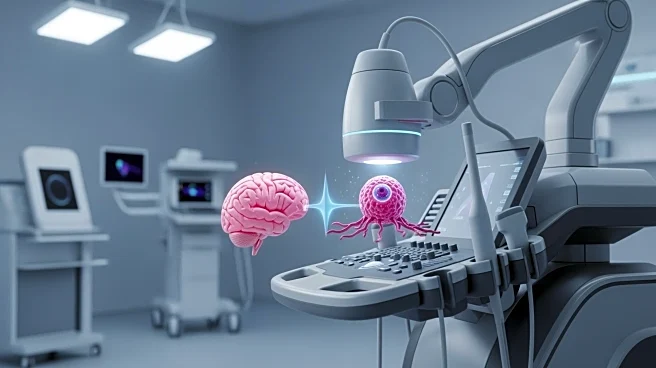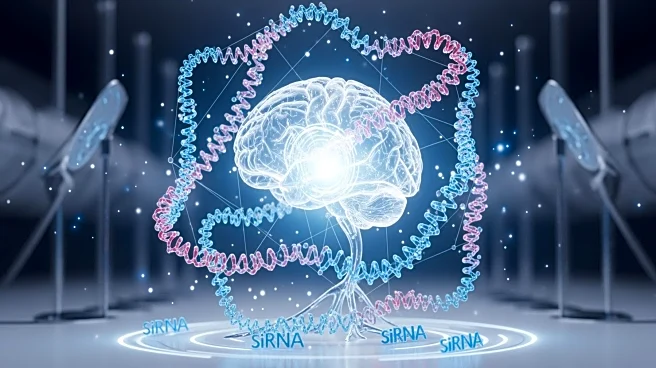What's Happening?
A study has developed temozolomide-loaded PLGA nanoparticles aimed at improving the treatment of glioblastoma multiforme. The research focused on enhancing the drug's bioavailability and therapeutic efficacy by encapsulating it within nanoparticles. Two
methods were used: nanoprecipitation and double emulsion solvent evaporation, with the former showing better encapsulation efficiency and release profiles. The nanoparticles demonstrated the ability to cross the blood-brain barrier, a critical factor in treating brain tumors. The study also evaluated the nanoparticles' effects on cell viability and ROS generation, indicating potential for improved cancer treatment.
Why It's Important?
Glioblastoma multiforme is a highly aggressive brain tumor with limited treatment options. The development of nanoparticles that can effectively deliver temozolomide across the blood-brain barrier represents a significant advancement in cancer therapy. This approach could enhance drug delivery, reduce side effects, and improve patient outcomes. The research highlights the potential of nanotechnology in overcoming pharmacokinetic limitations and increasing the efficacy of existing drugs, offering hope for more effective treatments for brain cancer patients.
What's Next?
Further biological evaluations are needed to fully understand the intracellular behavior and therapeutic mechanisms of the nanoparticles. Future studies will focus on advanced cellular assays to investigate nanoparticle uptake, apoptosis, and mechanistic pathways. These evaluations will provide deeper insights into the therapeutic potential of the developed nanocarriers and validate their suitability for brain-targeted chemotherapy.
Beyond the Headlines
The study underscores the importance of aligning drug release kinetics with clinical objectives, such as rapid drug availability versus prolonged plasma exposure. The findings may influence future research and development strategies in nanoparticulate delivery systems, emphasizing the need for tailored approaches based on therapeutic needs.













